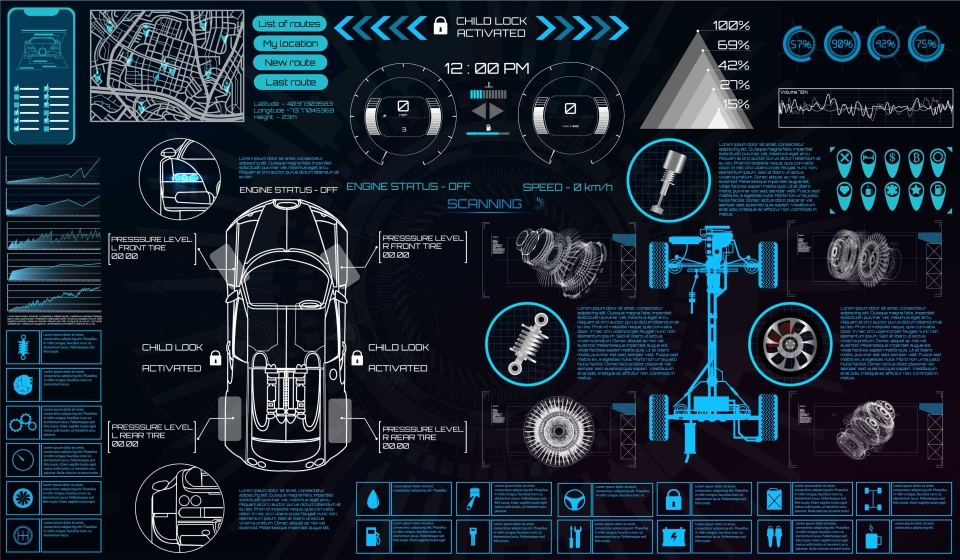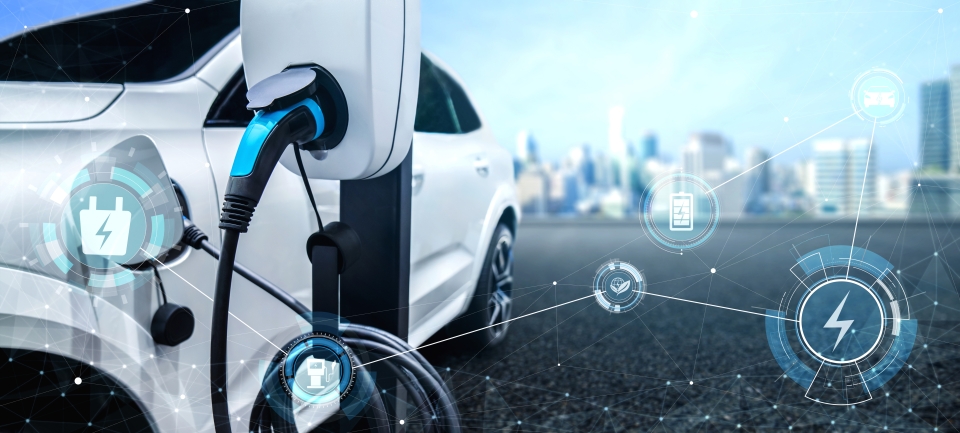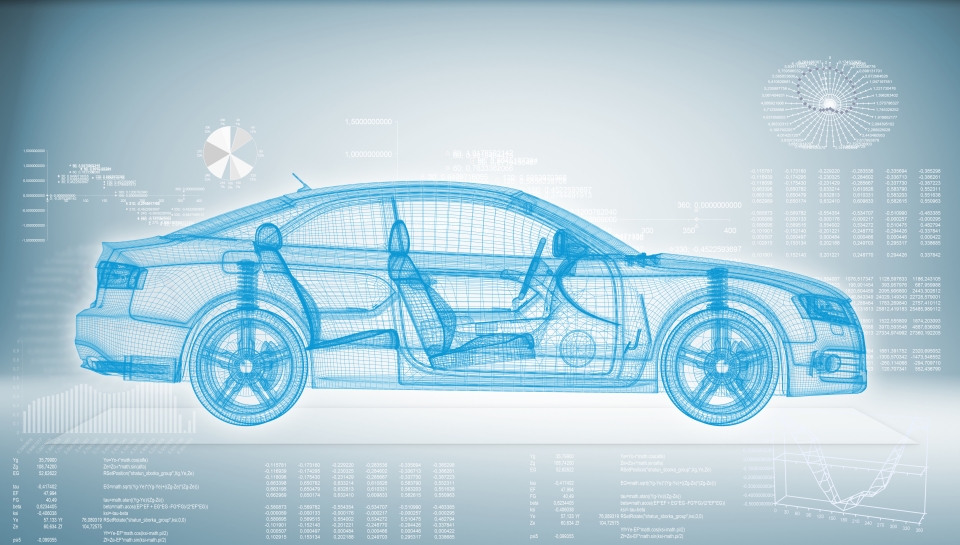Supply chain obstacle test automotive industry in ICE and EVs
2022/07/12 | By CENS
Taiwan’s automotive parts export value in 2021 reached USD$7.98 billion, marking a 14% growth compared to 2020, significantly seen in exports destined for China, Mexico, and Germany, which on average, saw growth of around USD$40 million. These statistics show strong demand in the Chinese and European automotive supply chains.
However, while demand has significantly increased last year, the months going into 2022 could derail global auto manufacturers’ expectations, largely caused by the tumultuous last two years characterized by continued COVID-19 lockdowns, rising costs of raw materials, parts, oil and gas, the Ukrainian-Russian conflict, prompting inflation and squeezing consumer purchasing ability, and significant delays in the chip supply chain.
While industry experts across the board expect circumstances to improve, especially chip shortages to gradually ease, Paul Lund, head of industrial ratings for Europe, the Middle East, and Africa at Fitch Ratings, pointed out that once pandemic restrictions are lifted at a widespread scale this year, auto manufacturers are unlikely to be able to meet the pent-up demand. Raw materials, significantly metals, are in short supply that manufacturers are more than likely to experience difficulties producing both ICE and electric vehicles (EV).
China’s Zero-COVID Policy
Since Shanghai’s COVID-19-induced lockdowns in Q2, supply chains faced further disruption, pushing backorders for not only ICE vehicles, but also electric vehicles as well. While restrictions have eased, with the city set to reopen completely in June, experts and suppliers have signaled that vehicle delivery will be on the backfoot as producers scramble to meet global demand.
According to Economic Daily News reports, quoting Laster Tech Group, global auto brands reported having difficulties meeting demand with empty inventories. For example, Volkswagen Group said that its new energy vehicles have completely sold out in Europe and the U.S., while Tesla’s delivery dates have been pushed to 2023 for certain models. Both examples signal that despite global auto brands’ best attempts to catch up on backlogged orders since 2020, demand for vehicles is still going strong and is unlikely to subside.
Car Price Hike on the Horizon
On the other hand, the aforementioned challenges to the automotive industry, including rising prices for raw materials, shipping, lockdowns, disrupted production, and material shortages, suppliers have suggested to local media that car prices could see hikes in the second half of 2022.
“The pressure to raise car prices is becoming bigger and bigger than before,” auto industry insiders revealed to the Economic Daily News. With tire producers hiking prices, the news is not unexpected, but it could limit sales growth for Taiwan’s domestic car brands, which have relied on competitive pricing strategies compared to the more expensive import cars.
News reports indicate that due to shortages of key components, such as semiconductors, many auto brands have chosen to release new vehicles with fewer features. The Ukraine-Russian conflict has cut into the materials needed to make auto parts, such as wire harnesses, pushing up production costs that were exacerbated by Shanghai’s lockdown, or even threatening to shut down production at global auto brands due to the shortage. Supply falling short, rising consumer demand, and rising prices for materials, all have posed significant pressure to automotive brands as a result.
The Push for More EV Charging

The growth of EV ownership has forced institutions, markets, and companies to look at quickly expanding and improving charging infrastructure and battery technologies. Among the various factors delaying consumers from considering owning EVs, the lack of charging piles, charging time constraints, and mileage are at the top of the list.
To address these concerns, many automakers have been directing more and more resources into their internal EV charging technology or external collaborations, including setting up fast-charging piles at dealerships or working closely with charging station suppliers.
Domestic automakers — Hotai Motor and Yulon Motor — have other ambitions, including expanding investments into green energy, energy storage, and charging equipment as a one-stop supplier. For instance, Hotai Motor Group’s subsidiary Hotai Energy had been promoting its solar power generation capacity’s expansion to 200MW and foundations to build up green energy storage systems and EV charging stations. The subsidiary’s focus on green energy and charging piles would be beneficial for Hotai’s plans in developing EV operations to build up an ecosystem.
However, the next roadblock in expanding EV charging capacities is getting charging stations into older residential buildings with parking lots. While newer built residential buildings are required to make space for EV charging needs, older residential buildings lack the necessary infrastructure.
Since EV technology became more and more mainstream in the past years, the most often quoted quibble among suppliers is the Condominium Administration Act Building Administration Division posing as the major challenge. For suppliers to set up charging stations within a condominium, the rights owners must unanimously pass the proposal. Building management committees have vetoed past proposals, citing safety concerns, high costs to set up the charging stations, and difficulties in splitting the charging costs.
EV Growth will hit Unavoidable Constraints
As outlined in a 2021 report issued by Deloitte Insights for electric vehicles, in the past two years, the EV market offers hope despite the short-term impact of COVID-19. The EV market shows continued growth well throughout the 2020s, especially when BEV and PHEV sales surpassed two million vehicles sold in 2019, and last year, EVs made up 2.5% of all new car sales. With the market recovering from COVID-19, Deloitte expects ICE vehicle growth to return to an upward trend, up to 2025, and resume its market penetration decline. However, Deloitte forecasted that yearly car sales are unlikely to reach or exceed pre-COVID levels until 2024, largely impacted by the slowdown in ICE sales, but would mean that EV sales could capture a significant portion of the market share.
China will continue to maintain its market share in the EV, leading ahead of the European, and the U.S. markets respectively well into 2030.
However, a number of factors are negatively impacting the EV market despite the projected upward trajectory, such as rising costs and material shortages, that would elevate EV prices beyond the forecasted drop as EVs become more acceptable and affordable. Supply chain disruptions will hinder markets and countries’ plans to electrify fleets, infrastructure, and further imbalance between countries
Deloitte Insights highlight that beyond 2030, there must be considerations of how some markets will be unable to support the transition to EVs in a similar manner compared to wealthier countries, specifically due to implementing suitable infrastructure that not all governments and markets can sustain. For these markets, ICE vehicles will remain the popular choice over EVs.


